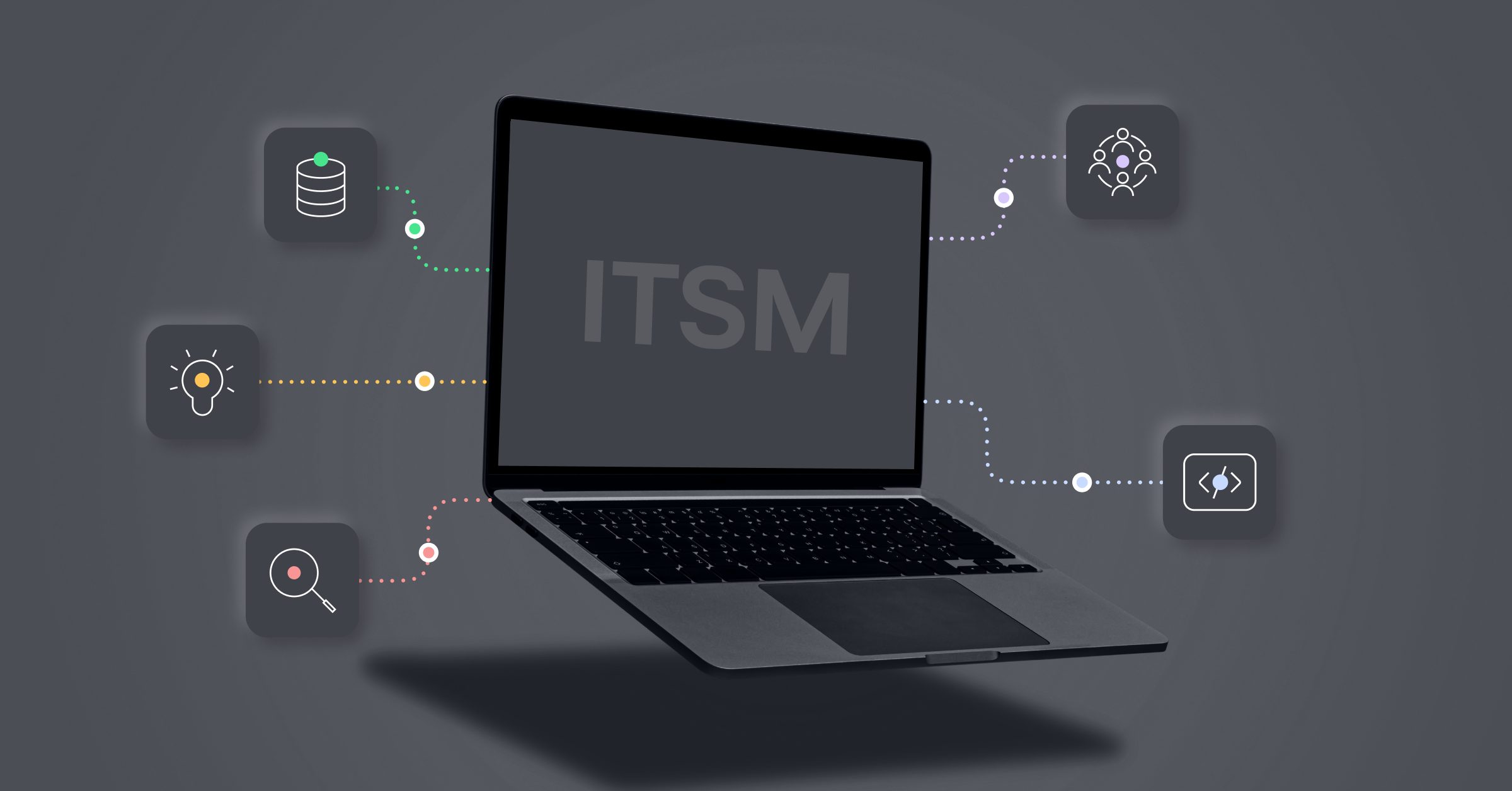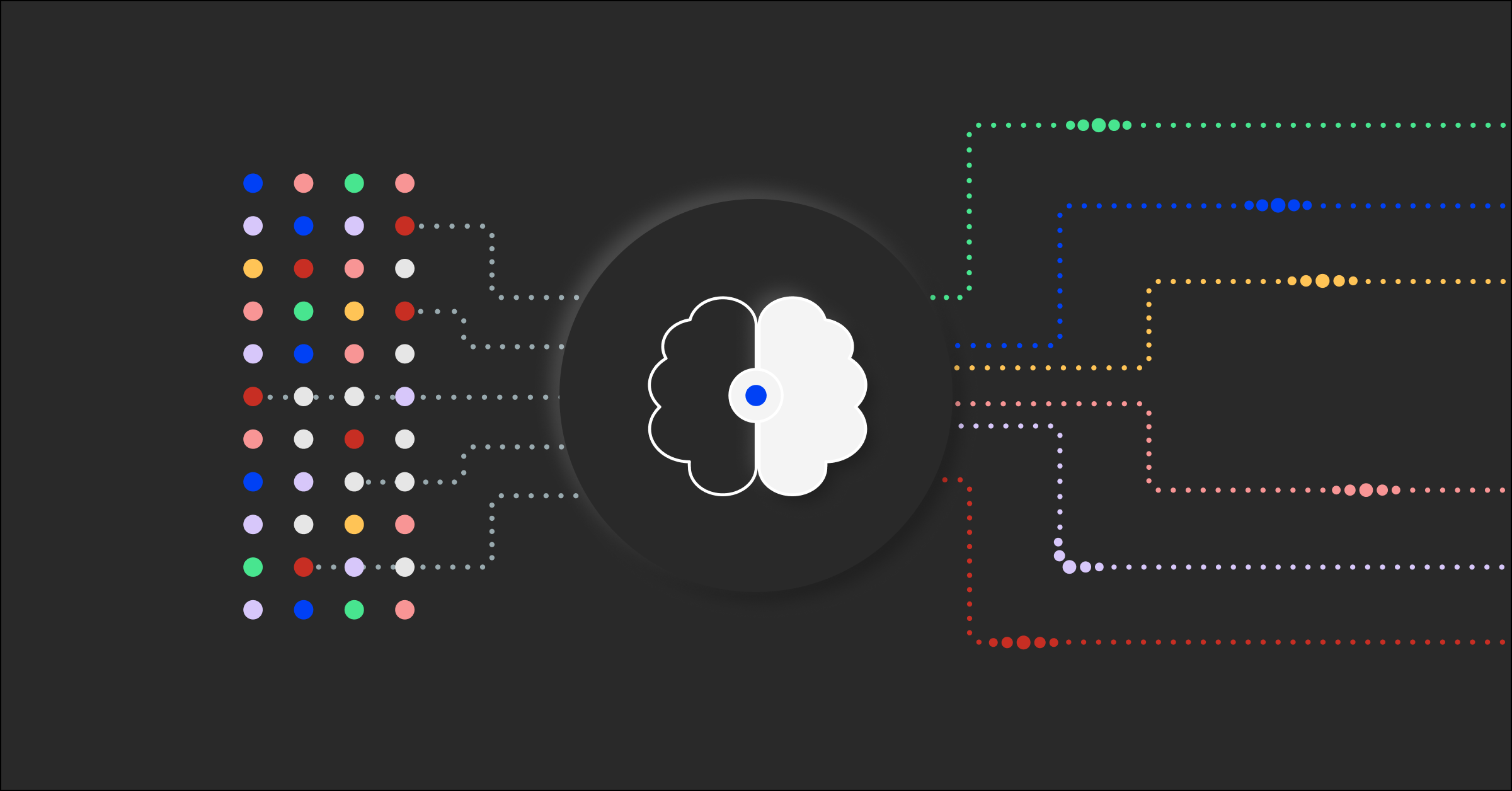What is ITSM? A comprehensive guide to IT service management

When your IT team is buried in tickets, struggling with shadow IT, and constantly putting out fires, it can feel frustrating and unsustainable. That’s where IT Service Management (ITSM) comes in.
ITSM gives you a plan to deliver reliable IT services while helping teams focus on what matters most: driving business success. It covers everything from handling incidents and requests to improving workflows and providing consistent value. ITSM aligns your IT team with business goals.
ITSM goes beyond keeping things running—it helps IT operations become more efficient, innovative, and focused on customer satisfaction. A robust ITSM framework is non-negotiable today, especially for IT operations (ITOps) teams dealing with cloud systems, automation, and hybrid workplaces.
In this guide, we’ll explain ITSM, why it’s essential for ITOps teams, and how to leverage it to level up your IT service delivery. Let’s get into it.
What is the meaning of ITSM?
IT service management is how IT teams manage the end-to-end delivery of IT services to their users, whether employees or customers. It’s a structured way to make sure IT services meet business needs, run efficiently, and produce measurable results.
At its core, ITSM is about processes: managing incidents, handling requests, solving problems, and delivering consistent support. But it’s not just about fixing things when they break. ITSM creates workflows that prevent issues and consistently add value.
What are the business benefits of ITSM?
Here’s how ITSM delivers tangible benefits:
Enhanced operational efficiency
With clear processes and workflows, ITSM eliminates chaos and bottlenecks. Tasks like resolving incidents, fulfilling service requests, and fixing recurring issues become faster and more predictable. This allows your IT teams to minimize reactive work and spend more time innovating.
Better alignment between IT and business goals
ITSM ensures IT services support business objectives. IT teams can improve productivity and create better user experiences by focusing on what the business needs.
Standardized service delivery
ITSM creates consistency. Whether responding to a ticket or rolling out a new app, standardized IT processes mean everyone knows what to expect, helping avoid surprises and contributing to reliable services and satisfied users.
Less downtime and risk
ITSM reduces the likelihood of system failures and security risks by proactively identifying and addressing potential issues. Fewer disruptions mean a more stable IT environment, which means happier users.
Reduced costs and improved ROI
Efficiency and consistency drive cost savings. With ITSM, teams can optimize resources, reduce waste, and resolve issues faster, translating to a better return on IT investments.
ITSM frameworks
ITSM frameworks provide best practices and guidelines to help businesses better manage IT services and deliver value. Two of the most popular are ITIL and DevOps.
IT Infrastructure Library (ITIL)
The Information Technology Infrastructure Library (ITIL) is the most widely used ITSM framework. It focuses on aligning IT services with business needs and provides best practices for managing the entire service lifecycle—from design and delivery to continuous improvement. ITIL covers important areas like incidents, problems, and change management to keep IT services consistent.
ITIL 4, the newest version, offers a more adaptable, contemporary method by integrating Agile, Lean, and DevOps principles to help organizations adjust to the fast-paced digital world.
DevOps
While DevOps isn’t a traditional ITSM framework, it complements ITSM by bridging the gap between development and operations teams. DevOps focuses on collaboration, automation, and continuous delivery to streamline software development and IT operations.
The main goal of DevOps is to break down silos to accelerate delivery and improve service reliability. Implementing CI/CD (continuous integration and continuous deployment), infrastructure as code (IaC), and automated testing enable teams to deploy IT services quickly and efficiently while minimizing downtime and risk.
Core ITSM processes
ITSM uses key processes to deliver services efficiently, reliably, and with minimal disruption. These processes create a structured approach to managing issues, changes, assets, and more. Here’s an overview of the main ITSM processes and their roles:
Incident management
When something goes wrong, the goal is to resolve the disruption and restore the service. Users don’t care about the reason for the disruption—whether it’s a system outage or a network failure—they need quick service restoration. However, the root cause matters to IT and stakeholders to minimize service interruptions and maintain organizational continuity. A comprehensive IT incident management approach that tracks incidents, assesses their severity, establishes priority levels, and implements targeted solutions ensures reliable operations.
Problem management
Problem management goes deeper than streamlining incident management processes—it identifies and addresses the root cause of recurring issues. Instead of repeatedly fixing symptoms, it works to prevent incidents from happening in the first place. This process includes root cause analysis, applying fixes, and documenting solutions to avoid long-term risks.
Change management
Change management helps ensure that any IT systems modifications—like updates, patches, or new deployments—are implemented smoothly and with minimal risk. By assessing, approving, and carefully planning changes, this process reduces the chances of unexpected disruptions or failures caused by poorly managed changes.
Service request management
This process handles user requests for standard IT services, like resetting passwords, installing software, or granting system access. Service request management streamlines these everyday tasks, allowing for quick resolution through predefined workflows.
Service level management (SLM)
Service level management defines, tracks, and verifies compliance with service level agreements (SLAs)—the agreed-upon standards for service quality, response times, and availability. Consequently, IT teams can better meet business expectations by monitoring performance and improving service delivery through SLM.
Configuration management
Configuration management keeps track of all IT components (known as configuration items or CIs) and their relationships. This gives IT teams accurate visibility into systems, hardware, software, and network configurations. With an up-to-date configuration management database (CMDB), teams can resolve issues faster and reduce risks during changes.
IT asset management (ITAM)
ITAM tracks and manages an organization’s IT assets—like hardware, software, and licenses—throughout their lifecycle. By keeping accurate records of purchases, maintenance, and decommissioning, ITAM helps optimize asset usage, control costs, and maintain compliance.
Knowledge management
Knowledge management stores valuable IT information—like troubleshooting guides, FAQs, and best practices—in one place so it’s easily accessible. Centralizing knowledge enables faster incident resolution, improved consistency, and reduces the burden of repetitive tasks.
ITSM best practices
Standardize processes
Standardizing ITSM processes—like incident resolution, service requests, and change management—minimizes confusion and errors because everyone follows the same steps. Start by documenting processes clearly and use templates or checklists to enforce best practices. Consider using ITSM tools to automate workflows.
Automate where possible
Automating repetitive tasks (think password resets or incident escalations) frees up your team for higher-value work, such as improving customer experiences. Begin with automating processes such as ticket responses, and expand as you identify more opportunities. Self-service portals are another way to streamline simple tasks, enabling end users to resolve issues themselves.
Leverage AI/ML
Operationalize AI and ML to help your IT team work smarter. For instance, AI-powered tools can detect anomalies in system behavior, assisting teams to address problems before they escalate into major disruptions. Additionally, analyzing historical data with AI/ML can uncover patterns and prevent recurring issues.
Optimize tools
Outdated or fragmented tools can create silos, inefficiencies, and frustrated teams. The right ITSM tools centralize critical ITSM processes and keep everything running smoothly under one platform. Regularly evaluate your tools to see if they meet evolving business needs and integrate seamlessly with other systems like monitoring solutions, CMDBs, and collaboration platforms. We recommend prioritizing tools with real-time dashboards, automation capabilities, and strong reporting features.
Focus on continuous improvement
ITSM is not a “set it and forget it” strategy—it requires continuous improvement to adapt to new technologies and changing business needs and challenges. Regularly review ITSM performance metrics, like resolution times, SLA compliance, and user satisfaction, to identify areas for improvement. Conduct post-incident reviews to analyze what went wrong and how to prevent similar issues. Get feedback from IT staff and end-users to address pain points and continuously refine processes.
Future trends in ITSM
Integration of AI and ML
AI and ML are becoming essential in ITSM to handle the growing volume of service requests and incidents. These tools can analyze massive datasets, identify patterns, and automate responses. AI and ML are critical for future scalability, and experts predict that 85% of organizations either use or plan to deploy AI across areas that include IT operations.
Automated service management
Automation is a core driver of ITSM’s future because manual workflows can no longer keep pace with the need for speed and accuracy. IT environments are becoming more complex due to hybrid infrastructures and increasing user expectations for fast resolutions. Automation reduces human error, speeds up service requests, and ensures consistency across processes like incident escalation and system monitoring.
Use of predictive analytics
Predictive analytics shifts IT operations from reactive to proactive. Tools leverage historical data and real-time insights to identify potential problems—like server failures or security vulnerabilities—before they disrupt services. Downtime costs businesses money and trust, so IT teams that can anticipate and prevent disruptions will play a pivotal role in improving operational stability.
Enhanced self-service
End-users expect immediate solutions, and IT teams must reduce the time spent on repetitive requests. AI-powered ITOps assistants and self-service portals make it possible. By 2025, organizations will manage an estimated 75% of user inquiries through AI-driven self-service tools. This trend reflects a shift toward user empowerment, where IT support becomes smarter and more accessible.
Shift to enterprise service management (ESM)
ESM applies ITSM principles across the organization, not just IT. Teams like HR, finance, and facilities benefit from standardized workflows, breaking down silos and improving service delivery for employees and customers.
Learn how AIOps maximize the value and utility of your ITSM investments
AIOps from BigPanda significantly enhances ServiceNow’s utility and maximizes the value of your ITSM investments. With BigPanda, your organization can reduce ticket volumes, prevent unnecessary escalations, minimize blind spots, and prevent recurring incidents.
These enhancements translate into significant real-world business outcomes. Autodesk integrated the BigPanda platform with ServiceNow to establish Smart Ticketing. With the Auto Sharing feature, BigPanda automatically notifies key team members and provides tickets that include critical incident information and real-time updates. This feature helped Autodesk streamline its workflow across the incident lifecycle, from detection to investigation to remediation. As a result, Autodesk reduced incidents by 69% and improved MTTR by 85%.
Check out our latest e-book to learn how BigPanda AIOps can transform your incident management practice natively within ServiceNow ITSM Standard, without the need to upgrade.



